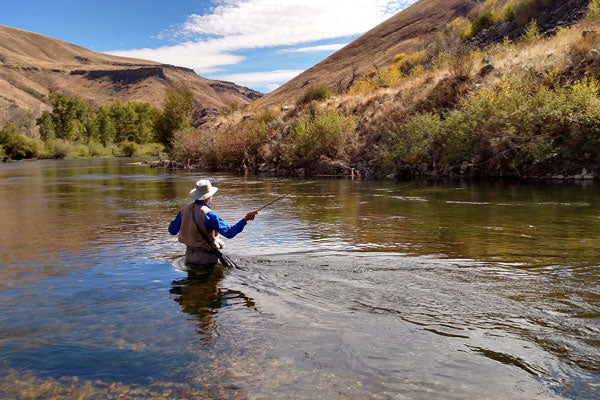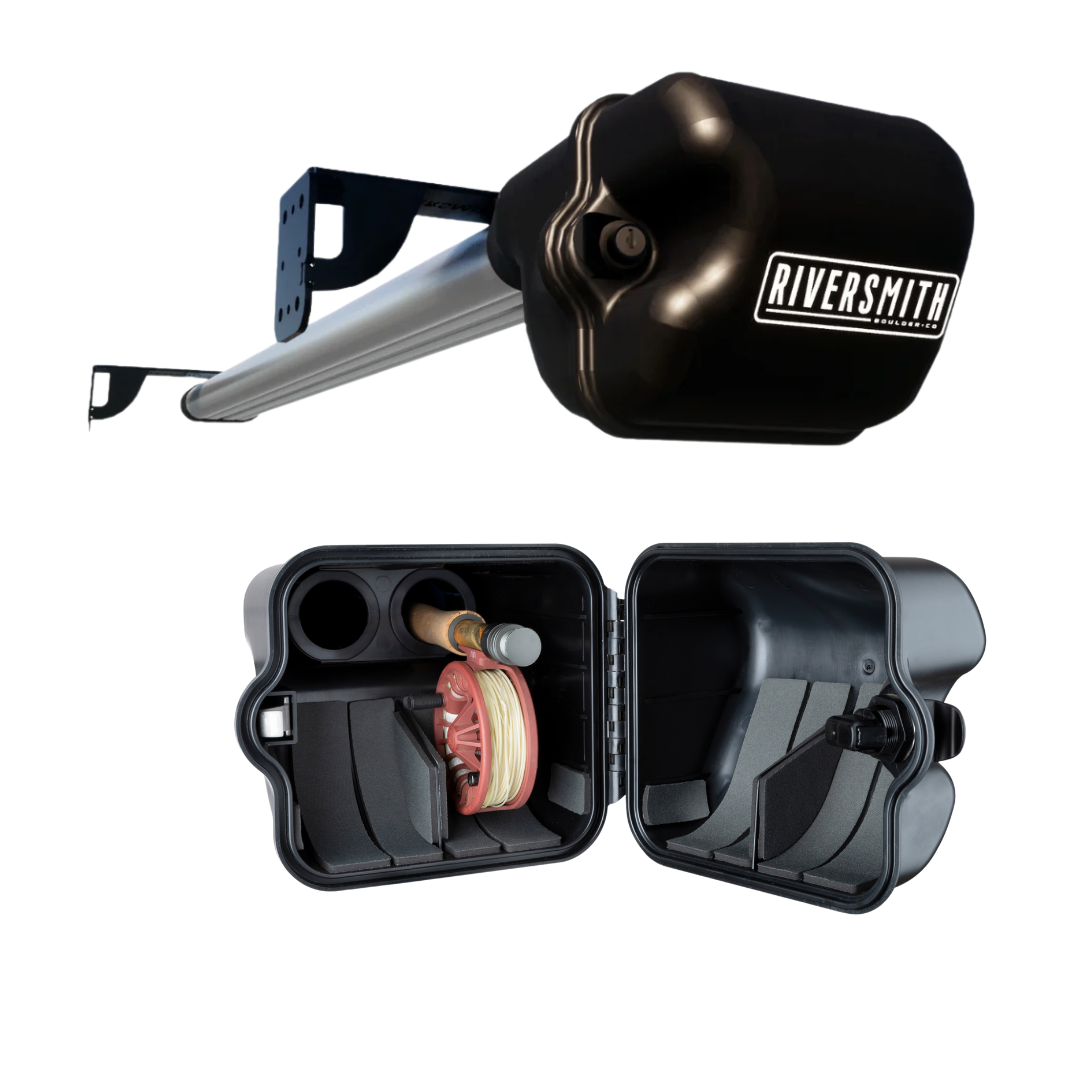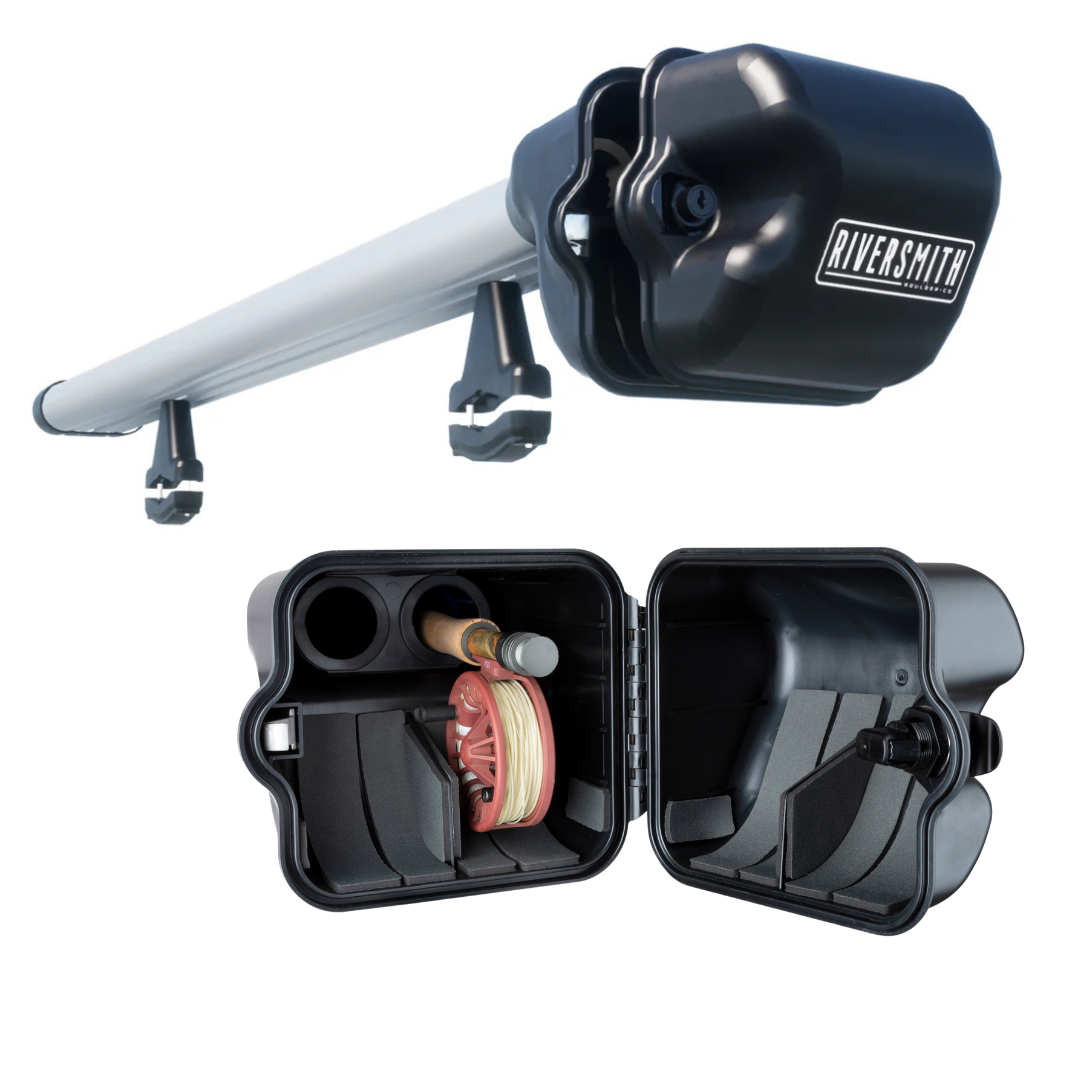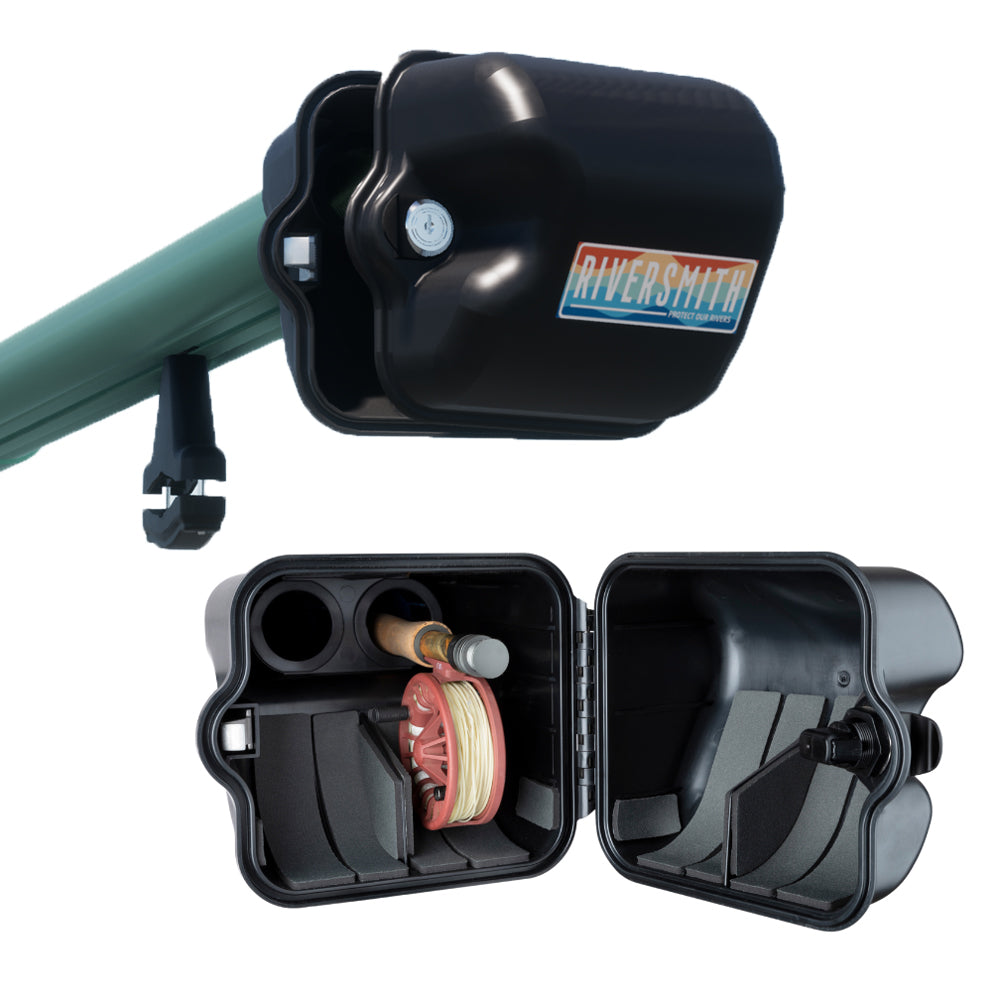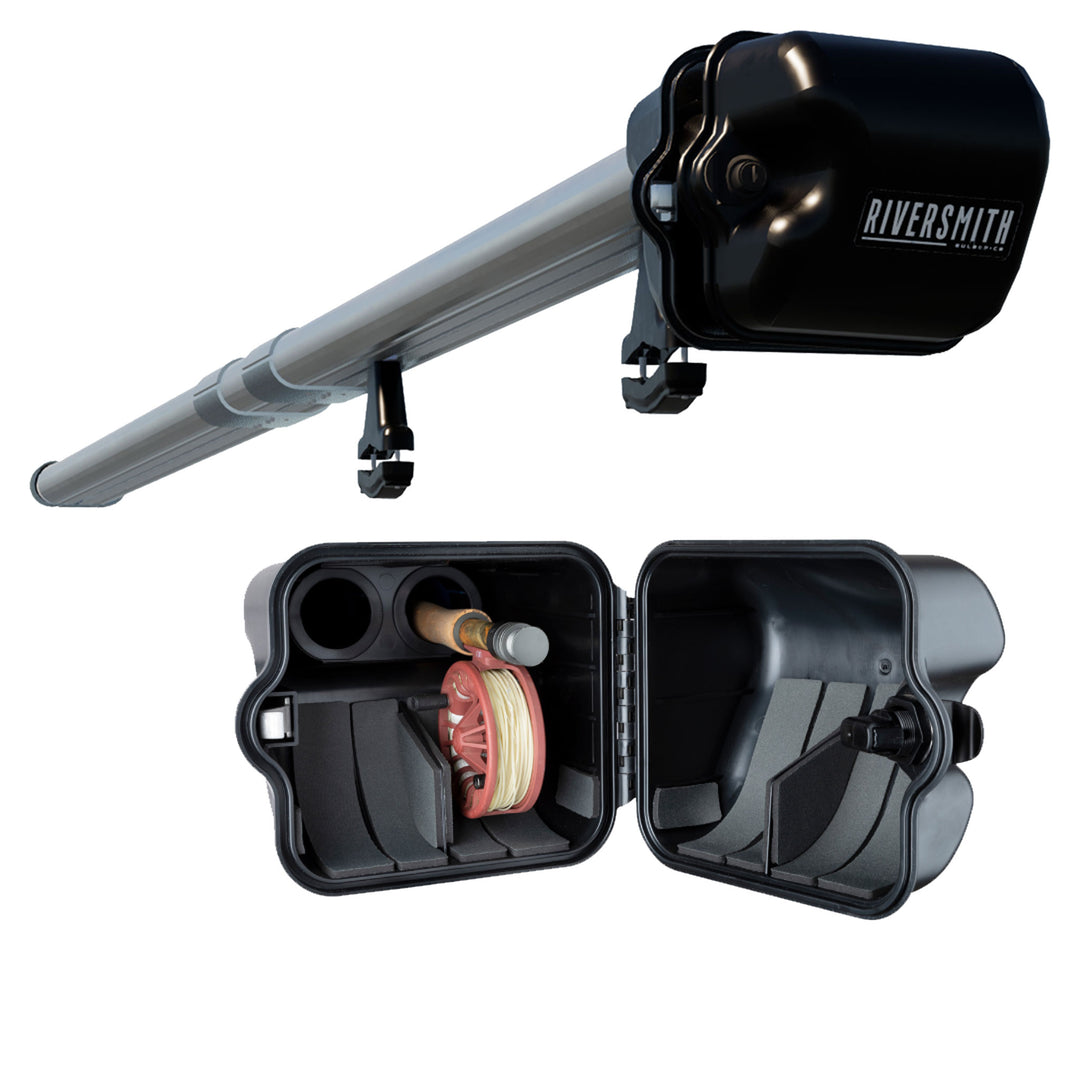Introduction to the Western United States Native Fish
One of the most common fish species discussed amongst anglers is the rainbow trout. Native to cold-water tributaries of the Pacific Ocean in Asia and North America, its scientific name, Oncorhynchus mykiss, is broken into two parts. Oncorhynchus, or Pacific salmon, is Greek for the hooked jaws that are most noticeable in the males during mating season. Mykiss derives from the Siberian’s native name used for the rainbow trout, mykizha.
The coastal rainbow trout is an anadromous fish, also known as a sea-run. This means they are born in freshwater and then head to saltwater for their adolescent years. After they have lived in the ocean for about two or three years, they then head back to freshwater and begin spawning. These coastal rainbow trout are sometimes referred to as steelhead trout, a popular synonym for this species in the angling community.

A lengthy history of being associated with clear, healthy mountain streams and lakes throughout North America, the rainbow trout has earned the reputation for being the most important game fish west of the Rocky Mountains. With a pronounced adaptability, the rainbow trout has been introduced to many streams and lakes throughout the United States, which has also placed it among the top five sport fishes in North America.
The world record for the largest rainbow trout ever caught, set in September 2009, was from the waters of Lake Diefenbaker, Saskatchewan, in Canada. This record setter weighed forty-eight pounds and reached thirty-four inches in length!
Appearance and Size
They get the “rainbow” part of their name from their multi-hued appearance. Blue, green, and yellow coloration with black spots throughout make up most of their bodies, whereas the underside is typically a milky white. Because there are so many subspecies of rainbow trout, the most reliable way to identify a rainbow trout is to look for their pink-red stripe, which extends the length of their body, from the gills to the tail. That being said, the anadromous species are usually more silvery-white in color and do not have the pink-red stripe profile.
Adult freshwater rainbow trout aren’t overwhelming in size; they range in weight from around one pound to five pounds and can reach around sixteen inches in length. However, the anadromous variety is much bigger and can get up to twenty pounds in weight.
Habitat and Diet
Rainbow trout’s spawning seasons vary greatly based on which hemisphere you find them in; for the Northern Hemisphere, spawning typically occurs from January through June. As for the Southern Hemisphere, spawning months are September through November, when the water reaches about 40 degrees Fahrenheit.
Based on which hemisphere the fishing takes place in, anglers can get a better sense of when to cast for rainbows. The freshwater species typically takes to water that is moderately large, well-oxygenated, and shallow with a gravel bottom. In order to lay her eggs, the female rainbow trout creates a redd, or nest, in the gravel by turning onto her side and flipping her tail up and down rapidly. Once the redd is created, the eggs are laid and buried with the surrounding gravel. Once safe from the external environment and internal environment such as other fish species, the male rainbow deposits its sperm over the eggs to fertilize them.
Predators by nature, rainbows will eat just about anything they come across. Although they are not as aggressive as brown trout when it comes to their feeding habits, they are similar to cutthroats and browns when it comes to what they like to feed on. Their diet is made up of larval, pupal, and aquatic insects such as caddisflies, stoneflies, and mayflies. They also like to snack on fish eggs and terrestrial insects such as ants, beetles, grasshoppers, and crickets.
Because food with a lot of tryptophan present influences enzyme activity and gene improvement, rainbow trout have evolved their immune systems and their stress resistance levels by snacking on tryptophan-stocked food. This particular appetite gives explanation as to why adult rainbows that inhabit the ocean primarily feed on other fish, squid, and amphipods, all loaded with tryptophan.
Fishing for Rainbow Trout
Being one of the most highly regarded game fish in the world, rainbow trout are a very popular species in the sport of fly fishing. Lures presented using spinning, casting or trolling techniques have been found to be the most effective when casting for rainbows. They are also suckers for various live and dead natural baits.
Although they are not as aggressive when it comes to feeding, they are known to be one of the hardest-fighting trout species once hooked. When hooked, they put up a powerful struggle and do not surrender without a real fight. They also spook easily and can be picky about what they eat on a day-to-day or hour-to-hour basis, so what worked one day may not work the next.
Nevertheless, their diet varies widely, so move lightly (weather in a boat, onshore, or wading) and try multiple baits, lures, and flies, including live bait, until you figure out what they have an appetite for. Lures that are white, gold, brown, green, black, silver, pink, orange, yellow, or red typically match the current hatch and prominent food sources, so it’s wise to pack lures of those colors in your vest.

The most tried-and-true lures for this species are Rooster Tail spinners, Blue Fox spinners, Kastmaster spoons, and Krocodile spoons. But remember, what worked the day before (or even the hour before) might change drastically, so be prepared to switch up your lure as soon as you notice fewer bites are happening.
Rainbow Trout Is What It’s All About, Like the Bob Dylan Song
“Build me a cabin in Utah
Marry me a wife, catch rainbow trout
Have a bunch of kids who call me ‘Pa’
That must be what it's all about
That must be what it's all about.” - Bob Dylan
Bob Dylan, the American singer songwriter from Minnesota, put it perfectly in his tune, “Sign on the Window.” Anglers cast to hook the feeling described in Dylan’s song just about every time they head out on the water, with their rod and tackle in tow. A little cabin out west, with their love to one side and a bucket full of rainbow trout to the other… is really what it is all about.


